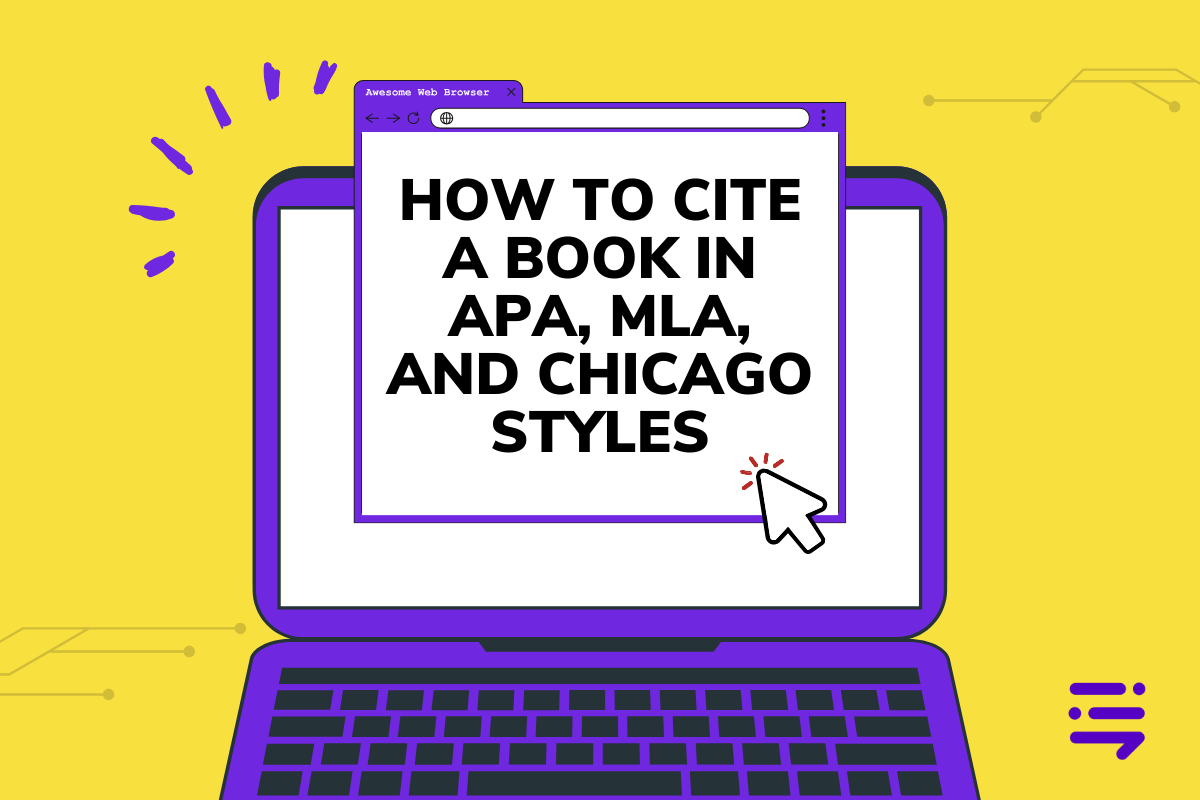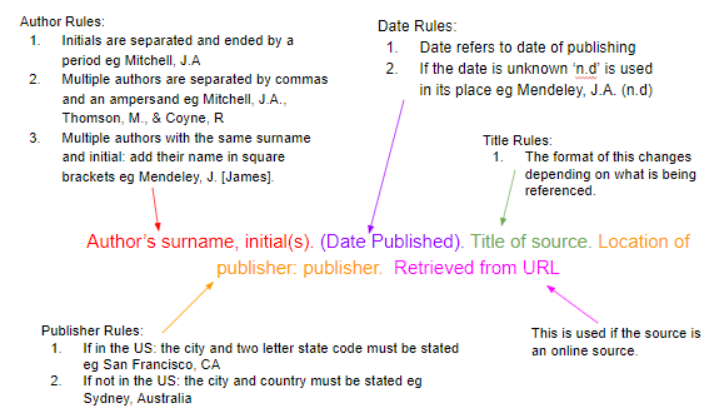Discover top guides, trends, tips and expertise from AIO Writers
How to Cite a Book in APA, MLA, and Chicago Styles
Julia McCoy
Thursday, 18th Apr 2024
You’ve just finished writing an amazing paper, but now you’re stuck on how to cite a book. Sound familiar?
Citing books can be tricky, especially with different styles like MLA, APA, and Chicago. One missed period or comma can make your citations go from A+ to a big fat zero.
But don’t worry, I’ve got your back. In this guide, you’ll learn how to cite a book like a pro, step-by-step.
No more stressing over citations, just smooth sailing from here on out.
Table Of Contents:
- How to Cite a Book in APA Style
- How to Cite a Book in MLA Format
- How to Cite a Book in Chicago Style
- Tips for Avoiding Plagiarism When Citing Books
- Additional Resources for Citing Books
- FAQs – How to Cite a Book
- Conclusion
How to Cite a Book in APA Style
One of the most popular ways to cite a book is APA style.
Let’s start with the basics. The core elements you’ll need for an APA book citation are the author’s name, the publication year, the book title, and the publisher.
Here’s what the format looks like:
Author’s Last Name, First Initial. Publication Date. Book Title. Publisher.
 Image Source: Mendeley
Image Source: Mendeley
In-Text Citations for Books in APA
Now, let’s talk about in-text citations. Whenever you quote or paraphrase from a book, you’ll need to include the author’s last name and the year of publication. If you’re quoting directly, toss in the page number too.
Here’s what it looks like:
(Author’s Last Name, Year Published)
For example: (Smith, 2020)
If you’re quoting, just add the page number:
(Author’s Last Name, Year Published, Page Number)
Like this: (Smith, 2020, p. 42)
Citing a Book with Multiple Authors
What if your book has multiple authors?
Just list them in the same order as they appear in the book, and use an ampersand (&) before the last author’s name.
Here’s the format:
Author 1’s Last Name, First Initial., & Author 2’s Last Name, First Initial. (Publication Year). Book Title. Publisher.
For instance:
Smith, J., Johnson, M., & Lee, K. (2020). The Complete Guide to Citing Books. Citation Press.
Just remember, the APA Publication Manual is your friend. When in doubt, consult the manual or check out the APA Style website for more examples and guidelines.
How to Cite a Book in MLA Format
Alright, let’s switch gears and talk about how to cite a book in MLA format. I know, I know – it’s like learning a whole new language. But stick with me, and we’ll have you citing like a pro in no time.
Standard Book Citation in MLA
In MLA style, your book citation will include the author’s name, the book title, the publisher, and the publication year.
Here’s the basic format:
Author’s Last Name, First Name. Book Title. Publisher, Publication Year.
For example:
Smith, John. The Art of Citing Books. Citation Press, 2020.

Citing an E-book in MLA
Now, I know what you’re thinking – what about e-books?
Citing an e-book in MLA is pretty similar to citing a print book. If you accessed it online, add the e-book format (like Kindle or EPUB) or the DOI/URL.
Here’s the format:
Author’s Last Name, First Name. Book Title. E-book format, Publisher, Publication Year.
For instance:
Smith, John. The Art of Citing Books. Kindle ed., Citation Press, 2020.
Referencing a Chapter in an Edited Book
Okay, let’s tackle one more MLA scenario – citing a chapter in an edited book.
You’ll need the chapter author’s name, the chapter title, the book editor’s name, the book title, the publisher, the publication year, and the chapter’s page range.
Here’s how to cite a chapter in a book:
Chapter Author’s Last Name, First Name. “Chapter Title.” Book Title, edited by Editor’s First Name Last Name, Publisher, Publication Year, pp. Page range.
Like this:
Johnson, Sarah. “The Art of the Citation.” The Complete Guide to Citing Books, edited by John Smith, Citation Press, 2020, pp. 101-123.
Phew. That was a lot, but you’ve got this. Just keep your trusty MLA Handbook nearby, and you’ll be citing like a champ in no time.
How to Cite a Book in Chicago Style
Last but not least, let’s talk about citing books in Chicago style. I promise it’s not as intimidating as it sounds. In fact, once you get the hang of it, you might even prefer the Chicago style over the others.
Notes and Bibliography System for Books in Chicago Style
In Chicago’s notes and bibliography system, you’ll cite books in footnotes or endnotes and then include a corresponding entry in your bibliography.
Here’s what the footnote citation looks like:
Author’s First Name Last Name, Book Title (Publication Place: Publisher, Year), Page number(s).
For example:
John Smith, The Art of Citing Books (New York: Citation Press, 2020), 42.
In your bibliography, the entry will look slightly different:
Author’s Last Name, First Name. Book Title. Publication Place: Publisher, Year.
Like this:
Smith, John. The Art of Citing Books. New York: Citation Press, 2020.
Author-Date System for Books in Chicago Style
If you’re using Chicago’s author-date system, your in-text citations will include the author’s last name, the publication year, and the page number (if quoting directly). Meanwhile, your reference list entry will have the author’s name, publication year, book title, and publication info.
In-text citation:
Author’s Last Name Year, Page number
For instance: (Smith 2020, 42)
Reference list entry:
Author’s Last Name, First Name. Year. Book Title. Publication Place: Publisher.
Like this:
Smith, John. 2020. The Art of Citing Books. New York: Citation Press.
Common Exceptions When Citing Books in Chicago
Of course, there are always exceptions to the rules. Here are a few common ones to keep in mind when citing books in Chicago style:
- For books with multiple authors, list them in the same order as they appear on the title page. In your bibliography, only invert the first author’s name.
- If you’re citing an edited book, add “edited by” and the editor’s name after the book title.
- For translated books, include “translated by” and the translator’s name after the book title.
- If you’re citing an e-book, add the e-book format or DOI/URL after the publication information.
When in doubt, always refer to the Chicago Manual of Style for the most up-to-date guidelines and examples.
Tips for Avoiding Plagiarism When Citing Books
Alright, let’s talk about the elephant in the room – plagiarism. As someone who’s been in the academic trenches, I know how important it is to give credit where credit is due. Here are some tips to help you avoid those dreaded plagiarism pitfalls when citing books.
Properly Paraphrasing from Books
First up, let’s talk about paraphrasing. When you’re putting a book’s ideas into your own words, it’s crucial to do it right. Here’s how:
- Read the original passage several times to make sure you fully understand it.
- Put the book aside and write your paraphrase from memory.
- Compare your paraphrase to the original to ensure you haven’t accidentally copied any phrases word-for-word.
- Always, always, always cite your source.
Trust me, taking the time to properly paraphrase will save you a world of headaches down the road.
Quoting Directly from Books
Now, let’s talk about direct quotes. Sometimes, you just need to use the author’s exact words to make your point. When you do, keep these tips in mind:
- Use quotation marks around the borrowed text.
- Only quote what you need to make your point – don’t go overboard.
- Always include an in-text citation with the author’s name, publication year, and page number.
- Make sure to smoothly integrate the quote into your writing.
Remember, the key is to use direct quotes sparingly and to always give proper credit.
What Not to Do
Finally, let’s go over some common citation mistakes that can lead to accidental plagiarism errors:
- Forgetting to include in-text citations for paraphrased or quoted material.
- Copying passages word-for-word without using quotation marks.
- Patchwork paraphrasing – just swapping out a few words here and there from the original.
- Not including a complete citation in your reference list or bibliography.
The best way to avoid these mistakes? Double-check your work and use a plagiarism checker like Turnitin before submitting your paper.
Citing books may seem like a daunting task, but with these tips in your back pocket, you’ll be a pro in no time.
Additional Resources for Citing Books
Phew, we’ve covered a lot of ground today. But before we wrap up, I want to leave you with some additional resources to make citing books a breeze.
Online Citation Generators for Books
If you’re looking for a quick and easy way to generate book citations, there are plenty of online tools to choose from. Some of my favorites include:
Just enter your book’s information, select your citation style, and voila. Instant citations. But remember, always double-check the generated citations for accuracy.
University Writing Lab Guides for Citing Books
If you’re a college student, your university’s writing lab likely has some great resources for citing books.
For example:
- The Purdue Online Writing Lab (OWL) from Purdue University has extensive guides for citing books in APA, MLA, and Chicago styles.
- The Harvard College Writing Center offers a quick guide to book citations in various styles.
These writing labs are staffed by experienced tutors who can help you navigate even the trickiest of citation conundrums.
Bookmark these sites for easy reference whenever you need to cite book sources.
FAQs – How to Cite a Book
How do you properly cite a reference book?
To nail a book citation, list the author’s last name, first name, book title in italics, publisher, and publication year.
How do you cite a Book in APA?
Start with the author’s surname and initials. Add the year in brackets. Then, italicize the title and finish with publisher details.
How do you cite a book in an essay text?
Citing within your essay? Mention the author’s last name followed by publication year for APA or page number for MLA style.
How do you cite an e-book in MLA?
For e-books in MLA: Author names first. Title next — italicized. Version (if any), Publisher, Year of Publication — all packed neatly into your Works Cited page.
Conclusion
There you have it, folks. You now know how to cite a book in MLA, APA, and Chicago styles. You’ve got the tools to create flawless in-text citations and reference list entries that will make your professors proud.
Remember, proper book citations are essential for avoiding plagiarism and giving credit where it’s due. They show that you’ve done your research and respect the original work of others.
So next time you’re wondering how to cite a book, just refer back to this citation guide.

UNLOCK YOUR POTENTIAL
Long Headline that highlights Value Proposition of Lead Magnet
Grab a front row seat to our video masterclasses, interviews, case studies, tutorials, and guides.



